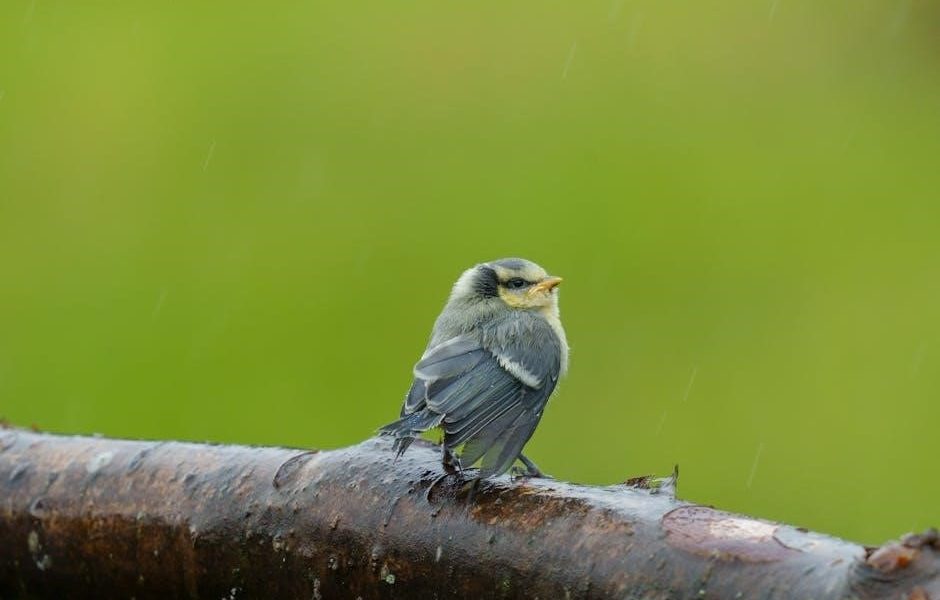Welcome to the Rain Bird Rain Sensor Manual, your guide to understanding and utilizing the RSD Series sensor for efficient irrigation management. This manual covers installation, configuration, and troubleshooting to ensure optimal performance and water conservation.
1.1 What is a Rain Bird Rain Sensor?
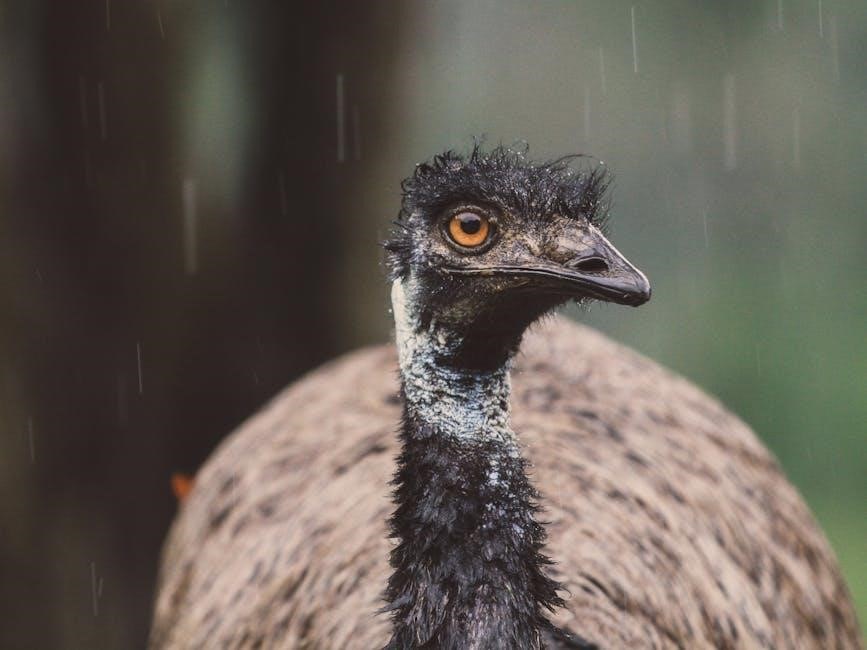
A Rain Bird Rain Sensor is a device designed to detect rainfall and automatically suspend irrigation cycles during precipitation. It is part of the RSD Series, offering durability and ease of installation for residential and commercial irrigation systems. The sensor measures precipitation levels and communicates with the irrigation controller to prevent unnecessary watering. By integrating with 24VAC systems, it ensures efficient water management and conservation. The Rain Bird Rain Sensor is a crucial component of smart irrigation, helping to reduce water waste and lower utility bills. It is compatible with various controllers and solenoid valves, making it a versatile solution for modern irrigation needs. This sensor is ideal for homeowners and businesses seeking to optimize water usage while maintaining healthy landscapes.
1.2 Importance of Using a Rain Sensor for Irrigation Systems
Using a rain sensor is essential for optimizing irrigation systems, as it prevents unnecessary watering during rainfall, thereby conserving water and reducing utility bills. By suspending irrigation cycles when rain is detected, it helps maintain soil health and prevents overwatering, which can harm plants and waste resources. Rain sensors promote efficient water management, aligning with environmental goals and reducing long-term costs. They are particularly beneficial in regions with frequent rainfall or water restrictions, ensuring irrigation systems operate responsibly and sustainably. Incorporating a rain sensor enhances the overall performance of your irrigation setup, making it both eco-friendly and cost-effective.
1.3 How the Rain Bird Rain Sensor Works
The Rain Bird Rain Sensor operates by detecting rainfall and automatically suspending irrigation cycles when a predetermined amount of rain is measured. It uses a rainfall setting to determine when to halt watering, ensuring that irrigation only occurs when necessary. The sensor communicates with the irrigation controller, signaling it to stop water flow during rain. Once the rain ceases and the sensor dries out, it allows the system to resume normal operation. This automatic process prevents overwatering, protects plants, and conserves water. By adjusting the rainfall sensitivity, users can customize the sensor to meet specific irrigation needs, ensuring efficient and responsible water management.
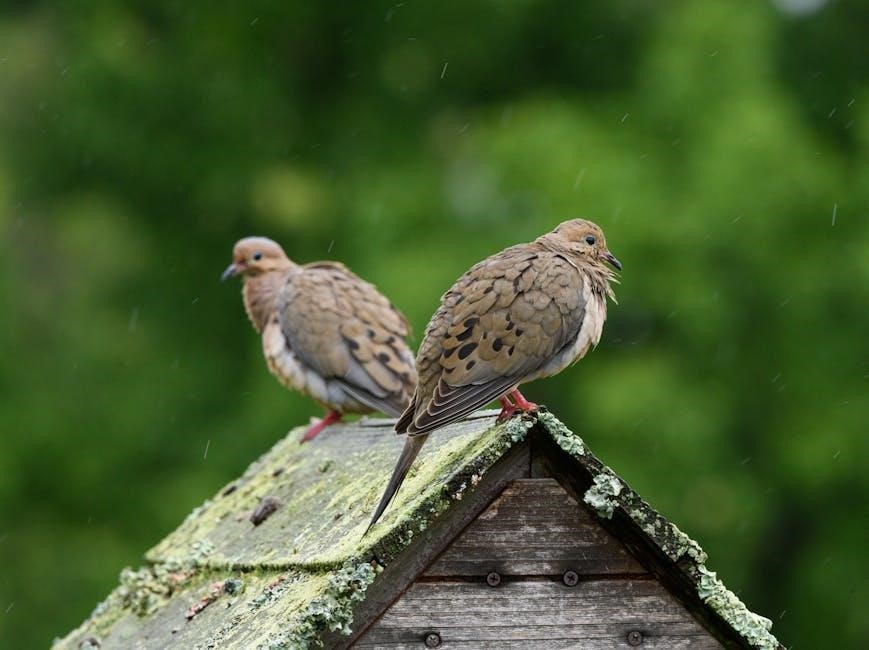
Features of the Rain Bird Rain Sensor
The Rain Bird Rain Sensor offers durable construction, easy installation, and compatibility with 24VAC systems. It provides adjustable rainfall sensitivity and automatic irrigation suspension, ensuring water conservation and cost efficiency while maintaining healthy landscapes.
2.1 Types of Rain Sensors Offered by Rain Bird
Rain Bird offers a variety of rain sensors designed to meet different irrigation needs. The RSD Series is a popular choice, known for its reliability and ease of use, suitable for residential and commercial applications. It features adjustable rainfall sensitivity, allowing users to customize water conservation efforts. Another option is the WR2 Rain/Freeze Sensor, which not only detects rainfall but also monitors temperature to prevent irrigation during freezing conditions. Rain Bird also provides sensors with wireless connectivity for integration with smart irrigation systems. These sensors are durable, weather-resistant, and designed to ensure efficient water management. They are compatible with 24VAC systems and can be easily installed to enhance the functionality of any irrigation setup.
2.2 Key Features and Benefits of the RSD Series Rain Sensor
The RSD Series Rain Sensor by Rain Bird is designed to provide precise and reliable performance for irrigation systems. Its key features include adjustable rainfall sensitivity, allowing users to set the exact amount of rainfall required to suspend irrigation. This sensor is built with durable, weather-resistant materials to withstand harsh outdoor conditions. It is easy to install and compatible with 24VAC systems, making it a versatile option for both residential and commercial applications. The RSD Series also promotes water conservation by automatically halting irrigation during rainfall, reducing water waste and lowering utility bills. Its sleek design ensures it blends seamlessly into various landscapes while maintaining functionality. With these features, the RSD Series offers a practical and efficient solution for modern irrigation needs.
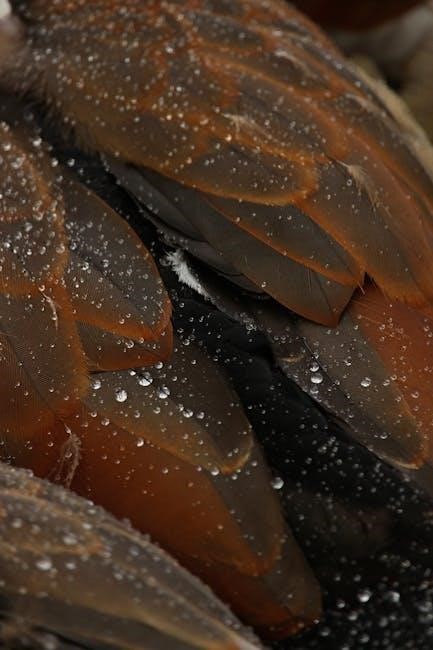
Installation Guide for the Rain Bird Rain Sensor
Install the Rain Bird Rain Sensor by selecting a suitable location, following step-by-step instructions, and ensuring compatibility with your irrigation system for optimal performance.
3.1 Choosing the Right Location for the Sensor
Choosing the right location for your Rain Bird Rain Sensor is crucial for accurate performance. Ensure the sensor is installed in an open area, exposed to direct rainfall, and away from shaded spots. It should be elevated to avoid water pooling and debris accumulation. Ideally, place it within 10 feet of the irrigation controller for seamless connectivity. Avoid areas near downspouts or gutters to prevent false readings. The sensor should be level and securely fastened to ensure proper operation. By selecting a strategic location, you optimize the sensor’s ability to detect rainfall accurately, ensuring efficient water conservation and system functionality.
3.2 Step-by-Step Installation Instructions
Installing the Rain Bird Rain Sensor involves a few straightforward steps. First, mount the sensor in a location with unobstructed exposure to rainfall, ensuring it is level and secure. Next, connect the sensor wires to the designated terminals on your irrigation controller, typically marked as “rain sensor” or “input.” If your controller has a specific setting for rain sensors, enable it according to the controller’s manual. Adjust the rainfall sensitivity setting on the sensor to match your irrigation needs. Finally, test the system by simulating rainfall and verifying that the irrigation cycles shut off. Proper installation ensures accurate functionality and optimal water conservation.

Configuring the Rain Bird Rain Sensor
Configure your Rain Bird Rain Sensor by adjusting sensitivity settings and connecting it to your irrigation controller. Proper setup ensures water conservation and efficient irrigation management.
4.1 Adjusting the Rainfall Sensitivity Settings
Adjusting the rainfall sensitivity settings on your Rain Bird Rain Sensor ensures it accurately detects precipitation levels. The sensor allows you to customize the rainfall threshold, from 1 to 4, with 1 being the most sensitive. This feature prevents unnecessary irrigation cycles during light rain. To adjust, access the sensor’s settings via the controller or directly on the device. Proper calibration ensures water conservation and efficient irrigation. For areas with frequent light rain, a higher sensitivity setting is recommended. Conversely, in regions with heavy rainfall, a lower setting may be more appropriate. Always test the sensor after adjustment to ensure it functions correctly with your irrigation system. This step is crucial for optimizing water usage and maintaining healthy landscaping. Regular checks and adjustments ensure long-term performance and reliability.
4.2 Connecting the Sensor to Your Irrigation Controller
Connecting the Rain Bird Rain Sensor to your irrigation controller is a straightforward process. Locate the sensor wires (typically red, black, and common) and ensure they are properly connected to the controller’s terminal ports. The red wire connects to the designated sensor input, while the black and common wires link to the appropriate valves. For compatibility, verify that the controller supports rain sensor integration. Certain controllers, like the Hunter XC, may require specific settings during manual cycles. Always refer to your controller’s manual for precise instructions. Proper connection ensures seamless communication between the sensor and the irrigation system.
After connecting, test the system by running a zone and activating the sensor’s test button. If the zone shuts off, the connection is successful. This setup ensures efficient water management and prevents unnecessary irrigation during rainfall. Regularly inspect connections for wear or damage to maintain optimal performance. Proper installation guarantees accurate sensor functionality and alignment with your irrigation goals.

Troubleshooting Common Issues

Troubleshooting common issues with the Rain Bird Rain Sensor involves diagnosing problems like sensor inactivity, incorrect wire connections, or sensitivity settings. Always test the sensor by holding the test button to ensure it stops irrigation. Verify wiring connections and adjust sensitivity as needed. Clean the sensor regularly to prevent debris interference. If issues persist, refer to the manual or contact Rain Bird support for advanced solutions. Proper troubleshooting ensures the sensor functions accurately, preventing water waste and maintaining efficient irrigation. Regular checks help identify and resolve issues promptly, ensuring optimal performance and water conservation. Always follow safety guidelines when troubleshooting electrical components.
5.1 Diagnosing and Resolving Common Problems
Common issues with the Rain Bird Rain Sensor include sensor inactivity, incorrect wiring, or improper sensitivity settings. To diagnose, start by pressing and holding the test button on the sensor to see if it interrupts irrigation. If the system doesn’t respond, check the wiring connections between the sensor and the controller, ensuring they are secure and correctly routed. Inspect for debris or moisture buildup on the sensor, which may prevent proper function; Adjust the rainfall sensitivity settings if the sensor is over- or under-reacting to precipitation. For persistent issues, consult the manual or contact Rain Bird support for advanced troubleshooting. Regular maintenance and inspections can help prevent these problems, ensuring reliable performance and water conservation.
5.2 Advanced Troubleshooting Techniques
For advanced troubleshooting, start by verifying the sensor’s voltage using a multimeter to ensure it receives the correct power supply. Check for corrosion or damage on the wiring and connections, as this can disrupt communication between the sensor and controller. Reset the sensor by disconnecting and reconnecting it from the controller, then test its functionality. If issues persist, inspect the irrigation controller’s settings to ensure the sensor is properly enabled and configured. Additionally, verify that the sensor is synced correctly with smart controllers or automation systems. For complex problems, consult Rain Bird’s technical support or refer to the WR2 user manual for detailed diagnostic procedures. Advanced techniques ensure your sensor operates efficiently, maintaining water conservation and system reliability.

Maintenance and Care of the Rain Bird Rain Sensor
Regularly clean the sensor to ensure accuracy. Check for debris or corrosion and replace worn-out parts. Proper maintenance ensures reliable performance and water efficiency over time.
6.1 Cleaning and Maintaining the Sensor
Regular cleaning and maintenance are essential to ensure the Rain Bird Rain Sensor operates accurately. Start by gently removing any debris, such as dirt or leaves, from the sensor surface using a soft brush or cloth. Periodically inspect the sensor for corrosion or damage, and replace any worn-out components promptly. After heavy rainfall, allow the sensor to dry completely to avoid moisture interference. Avoid using harsh chemicals or abrasive materials, as they may damage the sensor. For optimal performance, check the rainfall sensitivity settings and adjust if necessary. Regularly cleaning and maintaining the sensor ensures reliable operation, accurate water detection, and consistent irrigation control. This routine care is vital for extending the sensor’s lifespan and maintaining water efficiency.
6.2 When and How to Replace the Sensor
Replace the Rain Bird Rain Sensor if it shows signs of wear, damage, or malfunction. Common indicators include inaccurate rainfall detection, physical damage, or corrosion. Before replacing, ensure the sensor is clean and free from debris, as issues may stem from maintenance needs. To replace, disconnect the sensor from the irrigation controller, carefully removing the wiring connections. Install the new sensor in the same location, following the manufacturer’s installation guidelines. Reconnect the wiring securely and test the system to ensure proper functionality. Proper replacement ensures uninterrupted water conservation and efficient irrigation management. Regular inspections can help identify the need for replacement, preventing system downtime and maintaining optimal performance.
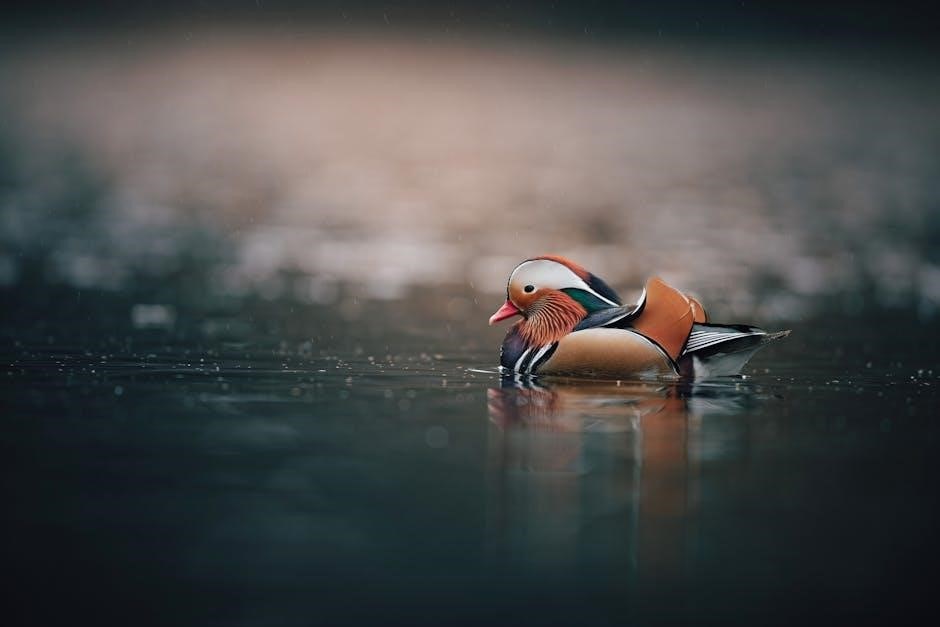
Benefits of Using a Rain Bird Rain Sensor
The Rain Bird Rain Sensor offers water conservation, preventing overwatering, and cost efficiency by automatically suspending irrigation during rain, ensuring efficient water management and long-term savings.
7.1 Water Conservation and Environmental Impact
The Rain Bird Rain Sensor plays a crucial role in water conservation by automatically suspending irrigation cycles during rainfall, preventing overwatering and reducing runoff. This not only helps protect local water resources but also minimizes the environmental impact of excessive water use. By ensuring water is used more efficiently, the sensor contributes to sustainable landscaping practices and supports eco-friendly irrigation management. Over time, this can lead to significant water savings, reducing the strain on community water supplies and promoting a healthier environment. The sensor’s ability to adapt to natural precipitation patterns makes it an essential tool for environmentally responsible lawn and garden care.
7.2 Cost Efficiency and Long-Term Savings
Installing the Rain Bird Rain Sensor offers significant cost efficiency and long-term savings by reducing unnecessary water usage. By preventing irrigation during rainfall, the sensor helps lower water bills and extends the life of your irrigation system. Over time, these savings accumulate, providing a substantial return on investment. Additionally, the sensor’s durable design ensures minimal maintenance and replacement costs, further enhancing its cost-effectiveness. Homeowners and businesses can enjoy both financial benefits and environmental advantages, making the Rain Bird Rain Sensor a practical and economical choice for modern irrigation systems. Its ability to optimize water use ensures that your landscaping needs are met without excessive spending.
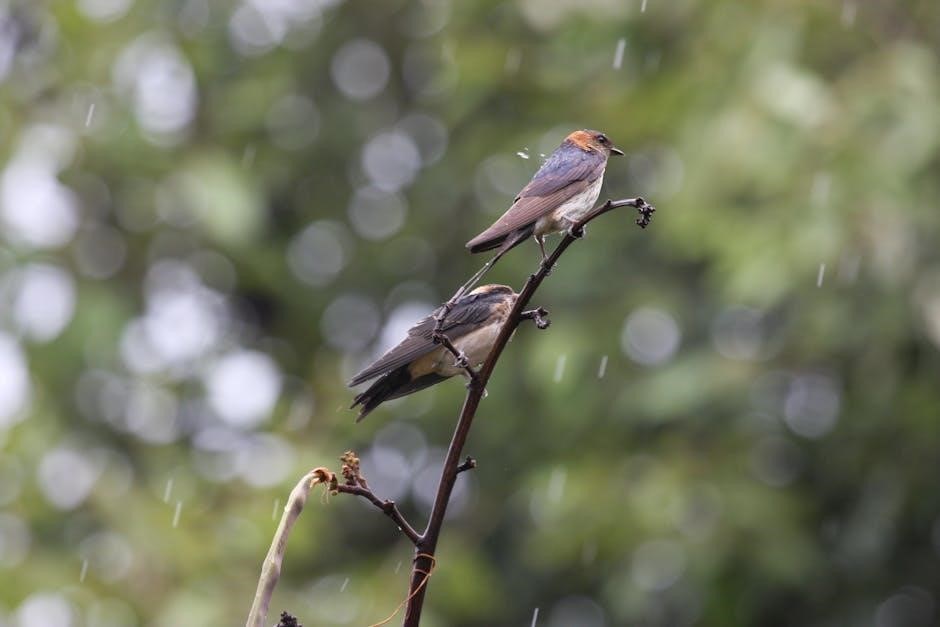
Integration with Smart Irrigation Systems
The Rain Bird Rain Sensor seamlessly integrates with smart irrigation systems, enhancing automation and efficiency. It syncs with smart controllers to optimize watering schedules based on real-time weather data, ensuring precise irrigation control and maximum water savings. This integration allows for remote monitoring and adjustments, making it easier to manage your irrigation system efficiently while reducing water waste.
8.1 How to Sync the Rain Sensor with Smart Controllers
To sync the Rain Bird Rain Sensor with smart controllers, start by accessing the controller’s menu and selecting the sensor integration option. Ensure the sensor is powered and properly connected to the system. Adjust the rainfall sensitivity settings to match your irrigation needs. Use the controller’s interface to enable remote monitoring and automation features. Test the synchronization by triggering a manual cycle and verifying the sensor’s response. This integration allows for real-time adjustments and ensures your irrigation system operates efficiently, conserving water and reducing waste. Always refer to the controller’s user manual for specific pairing instructions and troubleshooting tips.
8.2 Enhancing Automation with Rain Bird Sensors
Enhancing automation with Rain Bird sensors takes your irrigation system to the next level by integrating real-time weather data and smart technologies. These sensors seamlessly connect with smart controllers, enabling automatic adjustments based on rainfall and soil moisture levels. By leveraging advanced automation, you can optimize water usage, reduce manual interventions, and ensure your lawn receives the right amount of water. The sensors also allow for remote monitoring and control through compatible apps, giving you greater flexibility and peace of mind. This integration not only enhances efficiency but also supports sustainable water management, making your irrigation system smarter and more eco-friendly. With Rain Bird sensors, you can achieve a perfect balance between automation and environmental responsibility.
